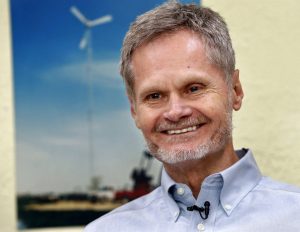 By Michael Bergey, DWEA President
By Michael Bergey, DWEA President
Two weeks ago, we celebrated the second anniversary of the Inflation Reduction Act of 2022, the transformative legislation that significantly increased business opportunities for the distributed wind industry. For manufacturers, dealers, and project developers of small and medium wind systems the most impactful piece of the bill is arguably the upgrades to the USDA Rural Energy for America Program (REAP). The IRA put a lot more money into REAP ($2.02 billion), but the creation of the separate Underserved Technologies (UT) pool, with $304 million in funding, was the key to distributed wind applications being funded. Previously it was extremely difficult for wind to compete with lower cost technologies such as solar and efficiency retrofits (e.g., grain dryers).
But there was an unwelcome “gotcha” in the legislation. The UT was funded with an initial $144 million appropriation in FY22 and subsequent annual appropriations of approximately $32 million for five years starting in FY23. The unwelcome gotcha – USDA is required to transfer unused UT funds for each fiscal year into the general REAP funding pool, where it will mostly fund imported solar. Our industry
needs time to scale up sales and deployment, so this provision is a gut punch. I don’t know the exact amount, but I estimate DW has already lost over $100 million in UT funding due to this provision.
I believe DWEA should try to work with Congress to stop these automatic transfers and to recapture lost funds to whatever extent we can. We are already working to get the UT program made permanent in the Farm Bill and I hope we can add fairer treatment of UT funding in that legislative effort or another.
